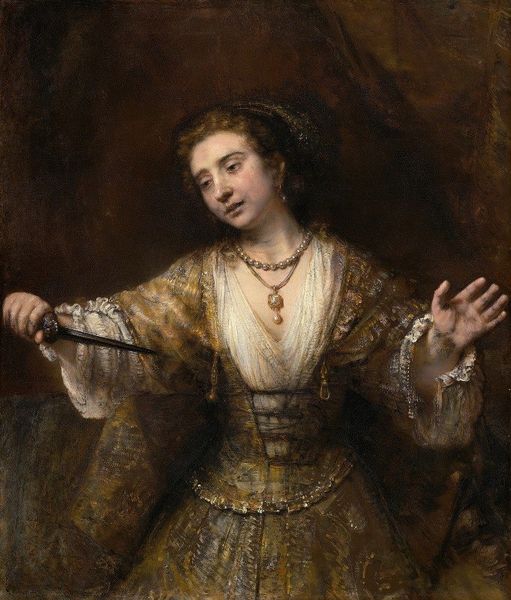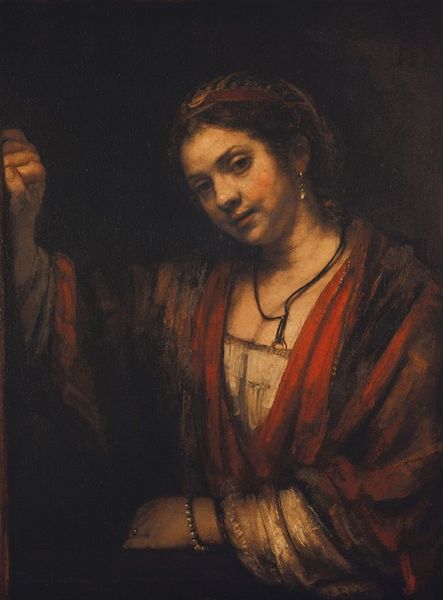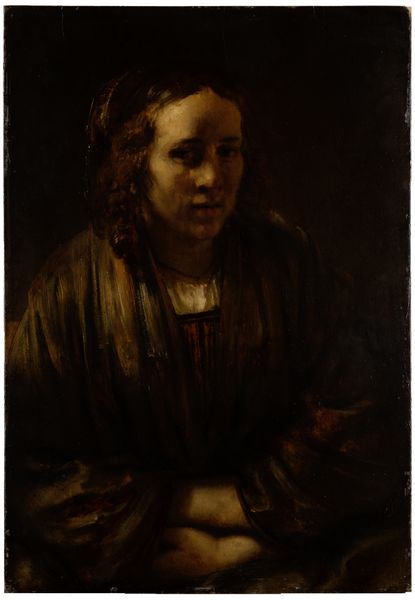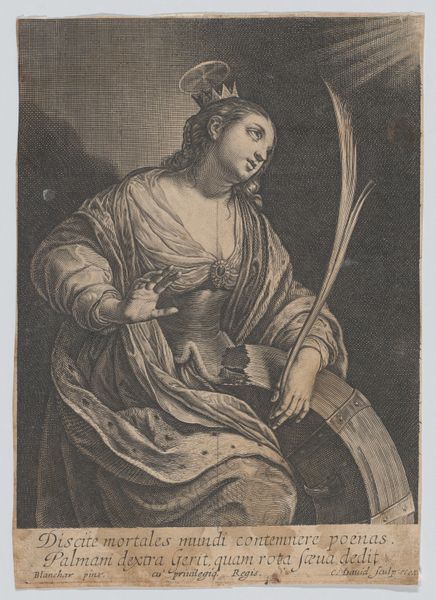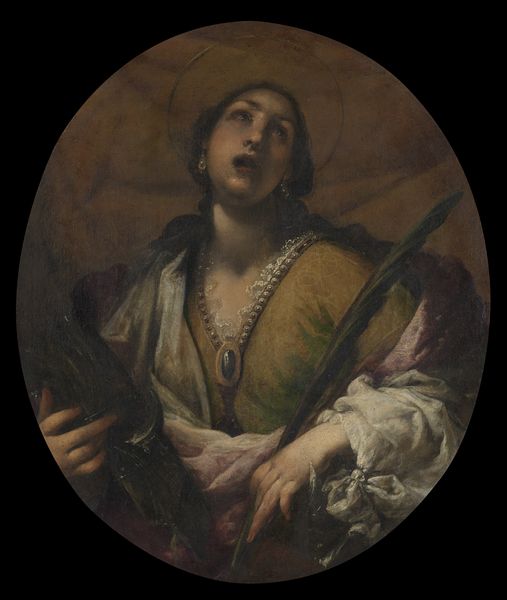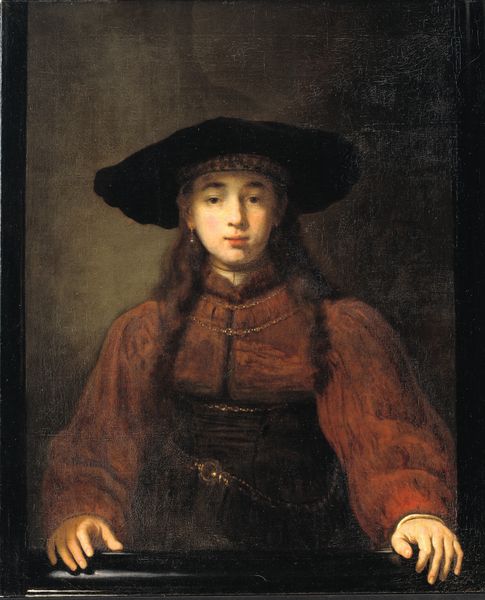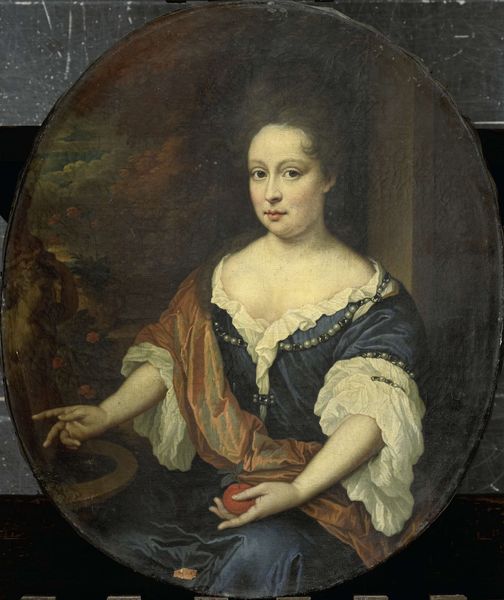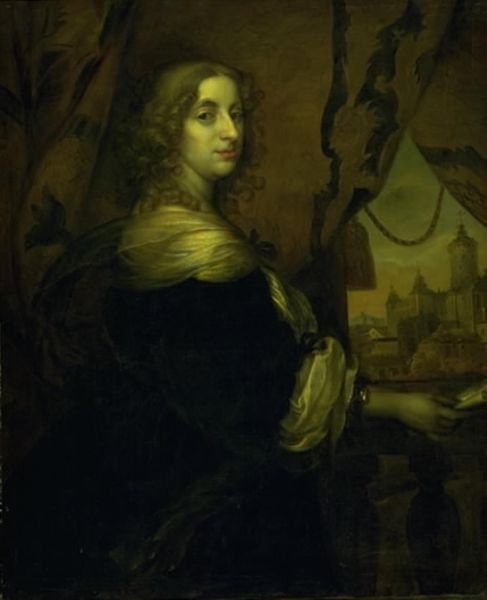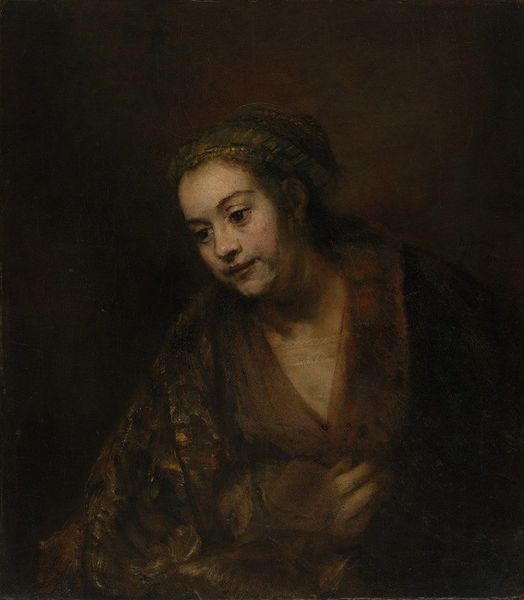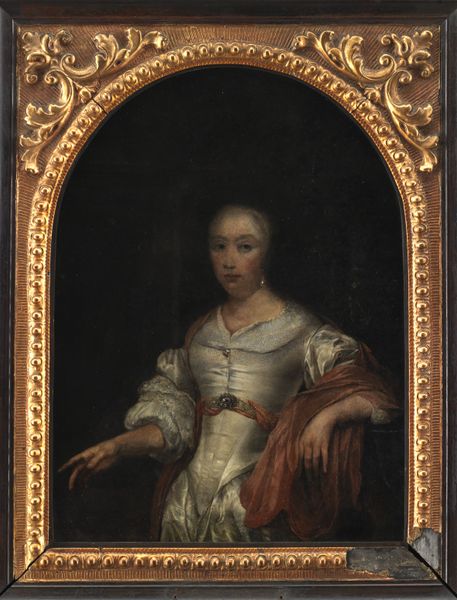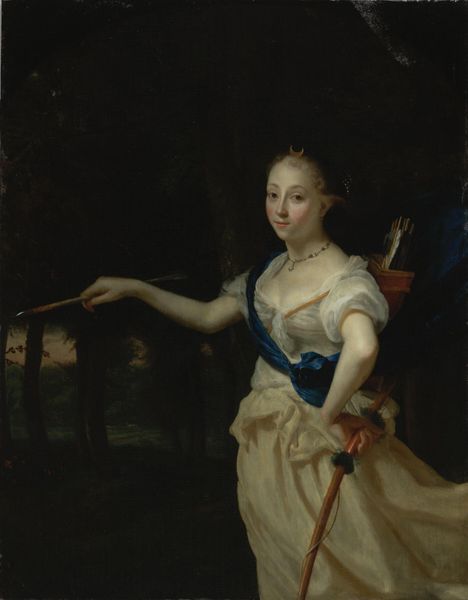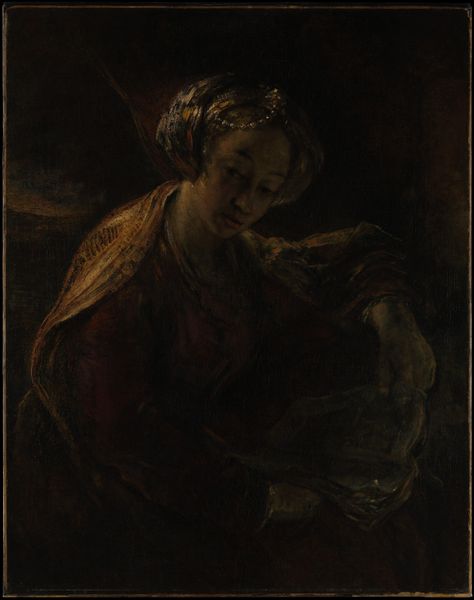
painting, oil-paint, oil-on-canvas
#
portrait
#
baroque
#
dutch-golden-age
#
painting
#
oil-paint
#
figuration
#
history-painting
#
oil-on-canvas
#
portrait art
Dimensions: 43 3/8 x 36 5/16 in. (110.17 x 92.28 cm) (canvas)59 1/4 x 52 5/16 x 4 1/2 in. (150.5 x 132.87 x 11.43 cm) (outer frame)
Copyright: Public Domain
Rembrandt van Rijn painted "Lucretia" during the Dutch Golden Age, a period marked by unprecedented economic prosperity and cultural flourishing, but also rigid social hierarchies. The painting depicts Lucretia, a noblewoman from ancient Rome, who committed suicide after being raped by a prince. Rembrandt here invites us to consider the burdens of honor and virtue placed upon women of high status. Note how her pale skin and fine garments signal her elite status, yet she is also a prisoner of her social standing, trapped by expectations of purity and chastity. Rembrandt’s interpretation humanizes Lucretia. Her tearful expression and trembling hand holding the dagger suggest an emotional complexity that transcends the traditional narrative of virtuous suicide. Instead we can see a critique of the societal structures that would drive a woman to such an extreme act. The image asks us to contemplate the intersection of gender, class, and power, while challenging the romanticized narratives of female sacrifice.
